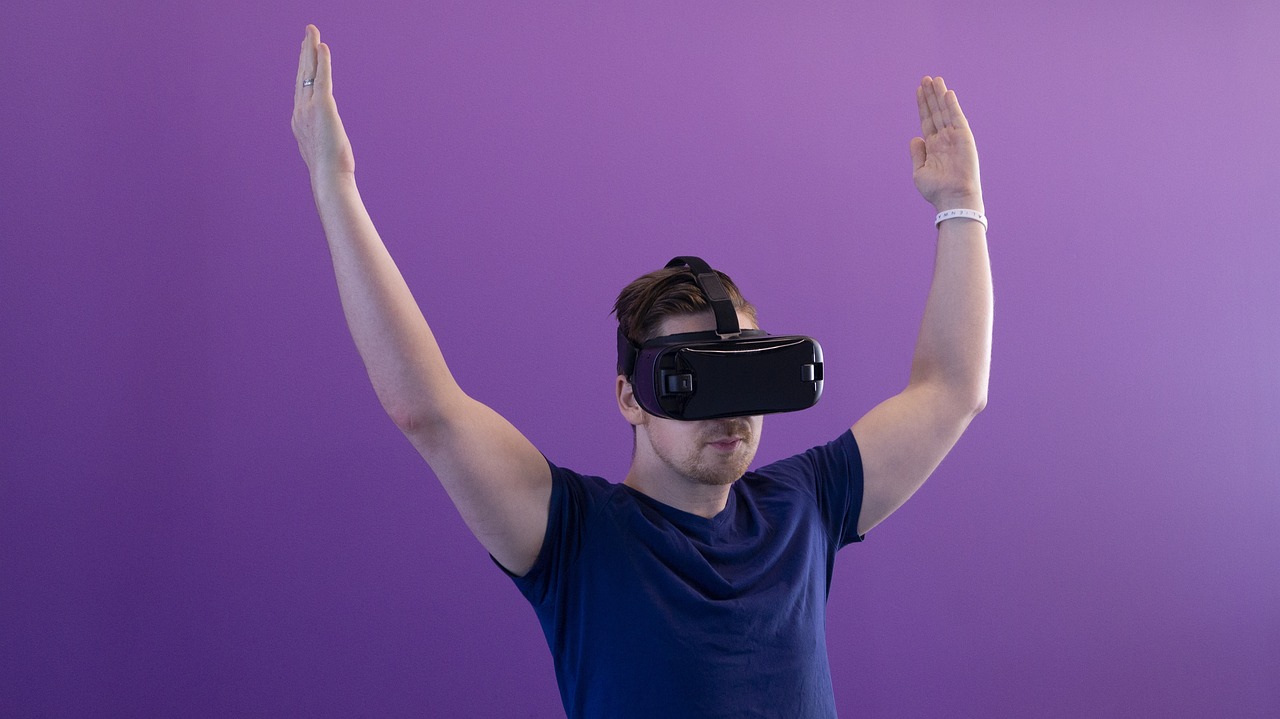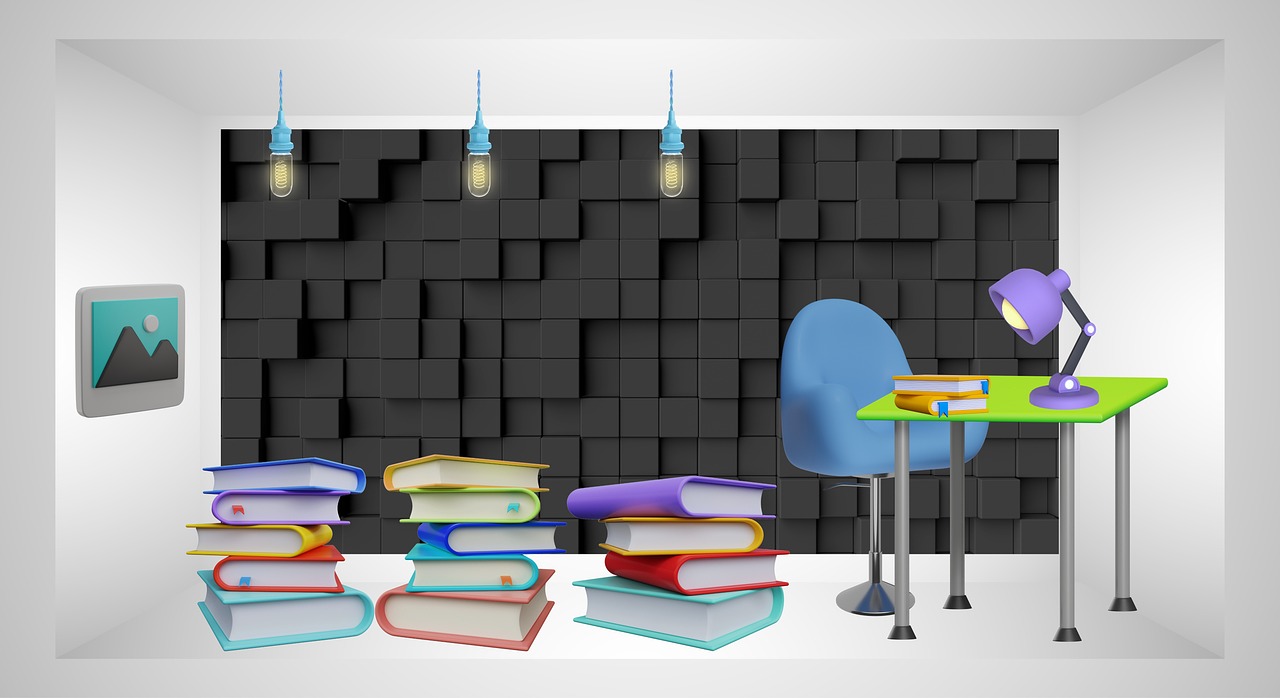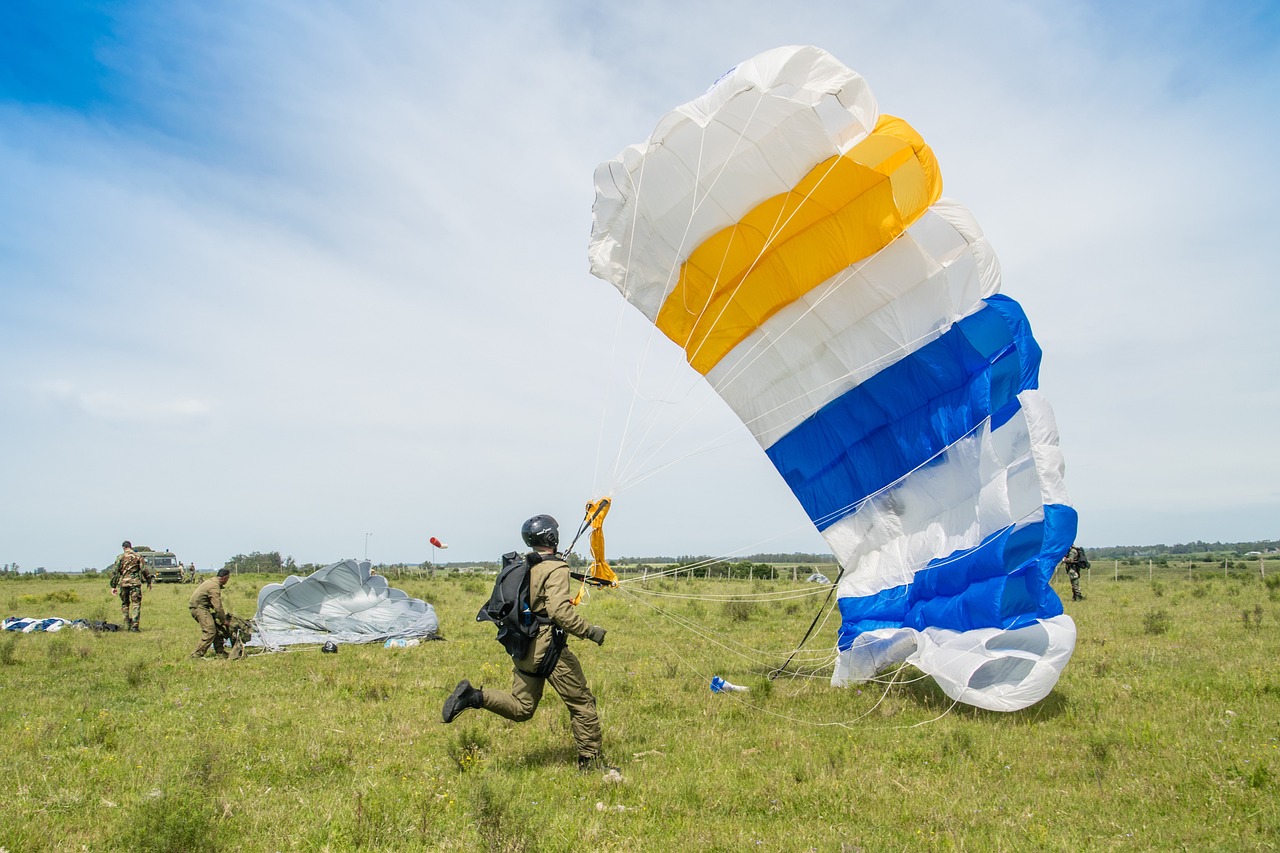Using VR for Effective Cross-Cultural Communication Training in Military Operations
In today's globalized world, military operations increasingly take place in diverse cultural environments. This shift necessitates a profound understanding of cross-cultural communication, as the ability to engage effectively with local populations can significantly influence mission outcomes. Enter Virtual Reality (VR), a groundbreaking technology that is transforming how military personnel prepare for these complex interactions. By immersing soldiers in realistic, culturally rich scenarios, VR training offers a unique opportunity to enhance their communication skills, foster empathy, and promote cooperation. Imagine stepping into a virtual marketplace bustling with life, where every gesture and word carries cultural significance. This is the power of VR—it not only teaches soldiers about different cultures but also allows them to experience these cultures firsthand, thereby preparing them for the unpredictability of real-world situations.
Effective communication across cultures is crucial in military operations. Understanding cultural nuances can prevent misunderstandings and improve collaboration, ultimately leading to mission success and enhanced relationships with local populations. When soldiers can communicate effectively, they can build trust and rapport, which are essential for successful engagements. For instance, a simple greeting in the local language can open doors that would otherwise remain shut, showcasing respect and understanding. This is where VR shines—by providing an immersive platform for soldiers to learn and practice these essential skills.
Virtual reality provides immersive learning environments that engage users actively. This technology allows military personnel to practice real-life scenarios, improving retention and application of cross-cultural communication skills in a controlled setting. Unlike traditional training methods, which can often feel detached or theoretical, VR places soldiers in the heart of the action. They can interact with virtual characters, navigate through culturally specific situations, and even face unexpected challenges that require quick thinking and adaptability. This hands-on approach not only makes learning more enjoyable but also significantly enhances the ability to recall and apply these skills when it matters most.
VR can recreate complex cultural interactions, enabling trainees to experience diverse perspectives. This simulation prepares them for the unpredictability of real-world situations, fostering adaptability and quick thinking in cross-cultural exchanges. For example, a soldier might find themselves in a virtual scenario where they must negotiate with local leaders while navigating cultural taboos. Such experiences are invaluable, as they teach soldiers to read the room, understand non-verbal cues, and respond appropriately to various cultural dynamics. The immersive nature of VR ensures that the lessons learned are not just theoretical but are ingrained in the soldier's memory.
Role-playing scenarios in VR can help military personnel understand different cultural viewpoints. By stepping into the shoes of others, they develop empathy and awareness, which are vital for effective communication and collaboration. Imagine a soldier experiencing a day in the life of a local community member, facing their challenges and celebrating their traditions. This kind of immersive role-playing fosters a deeper appreciation for cultural differences and prepares soldiers to engage respectfully and effectively in real-world interactions.
Immediate feedback in VR training sessions allows personnel to identify strengths and weaknesses in their communication styles. This iterative process enhances learning and promotes continuous improvement in cross-cultural interactions. After each VR session, soldiers can receive detailed feedback on their performance, highlighting areas where they excelled and aspects that require further development. This continuous loop of practice and feedback is crucial for building confidence and competence in cross-cultural communication.
Assessing the impact of VR training on cross-cultural communication skills is essential. Various metrics, including participant feedback and performance evaluations, can help determine the effectiveness of these innovative training methods. By gathering data on how well soldiers adapt to cultural scenarios and their ability to communicate effectively, military trainers can refine their programs to ensure maximum impact. This evidence-based approach not only validates the use of VR in training but also helps in securing funding and support for future initiatives.
While VR offers numerous benefits, there are challenges in its implementation, including cost, technology accessibility, and the need for proper training facilitators to maximize its potential in military settings. Addressing these challenges is crucial for successful adoption. For instance, investing in high-quality VR equipment can be expensive, and ensuring that all personnel have access to this technology can be a logistical challenge. Additionally, trainers must be adequately prepared to facilitate these sessions, ensuring that they can guide soldiers through the immersive experiences effectively.
Addressing technological barriers is crucial for successful VR implementation. Ensuring that all personnel have access to the necessary equipment and training can enhance the overall effectiveness of cross-cultural communication programs. This may involve investing in mobile VR units that can be deployed in various locations, allowing more soldiers to participate in training regardless of their base location.
Combining VR with traditional training methods can create a comprehensive learning experience. This hybrid approach leverages the strengths of both modalities, ensuring well-rounded preparation for military personnel in cross-cultural situations. For example, classroom sessions can be used to introduce cultural concepts and theories, while VR can provide the practical application of these ideas in simulated environments. This integration not only reinforces learning but also keeps training engaging and relevant.
- What is VR training in military operations?
VR training uses virtual reality technology to simulate real-life scenarios, allowing military personnel to practice cross-cultural communication skills in a controlled environment. - How does VR improve learning outcomes?
VR enhances learning by providing immersive experiences that engage users, enabling them to practice skills actively and receive immediate feedback. - What are the challenges of implementing VR training?
Challenges include costs, technology accessibility, and the need for trained facilitators to guide VR sessions effectively. - Can VR training replace traditional methods?
VR training is most effective when integrated with traditional methods, creating a comprehensive learning experience that leverages the strengths of both approaches.

The Importance of Cross-Cultural Communication
Effective communication across cultures is crucial in military operations. Imagine being in a high-stakes situation where a simple misunderstanding could lead to dire consequences. In diverse operational environments, military personnel often find themselves interacting with local populations who may have vastly different cultural backgrounds. This is where the significance of cross-cultural communication comes into play. It’s not just about speaking the same language; it’s about understanding the nuances that come with different cultural perspectives.
When military personnel are well-versed in cross-cultural communication, they can navigate complex interactions with ease. This understanding can prevent misunderstandings that might escalate tensions and foster better relationships with the communities they serve. For instance, knowing how to approach a local leader respectfully can open doors to cooperation and trust. In contrast, a lack of cultural awareness might result in unintentional offenses, jeopardizing missions and endangering lives.
Moreover, effective cross-cultural communication enhances collaboration among diverse teams. In military operations, teams often consist of individuals from various backgrounds, each bringing unique skills and perspectives to the table. By fostering an environment where open communication is encouraged, military units can leverage these differences to achieve mission success. This collaboration is not just about working together; it’s about creating a shared understanding that can lead to innovative solutions in challenging situations.
To illustrate the importance of this communication, consider the following key points:
- Prevention of Misunderstandings: Cultural awareness helps avoid conflicts that arise from misinterpretations.
- Building Trust: Understanding local customs and practices fosters trust between military personnel and local communities.
- Enhancing Operational Effectiveness: Effective communication leads to better coordination and execution of missions.
In conclusion, the importance of cross-cultural communication in military operations cannot be overstated. It is a vital skill that enhances operational effectiveness, builds trust, and ultimately contributes to the success of missions. As military personnel engage with diverse cultures, investing in cross-cultural communication training becomes not just beneficial but essential.

How VR Enhances Learning Experiences
Virtual reality (VR) is revolutionizing the way military personnel learn and develop essential skills for effective cross-cultural communication. By immersing trainees in realistic environments, VR creates a unique platform that engages users far beyond traditional training methods. Imagine stepping into a bustling marketplace in a foreign country, where the sounds, sights, and even smells are all part of the experience. This immersive quality of VR enhances learning by making it more relatable and impactful.
One of the standout features of VR is its ability to simulate real-world scenarios. This technology allows military personnel to engage in complex cultural interactions without the risks associated with actual deployment. For instance, a soldier could practice negotiating with local leaders or participating in community events, all while receiving immediate feedback on their communication style. Such simulations prepare them for the unpredictability of real-world situations, fostering adaptability and quick thinking in cross-cultural exchanges.
Moreover, VR enhances the learning experience by incorporating role-playing elements. Participants can step into the shoes of individuals from different cultural backgrounds, gaining insights into their perspectives and values. This role-reversal not only builds empathy but also cultivates a deeper understanding of the nuances that influence communication. For example, a soldier might find themselves navigating a conversation with a local elder, learning how to approach sensitive topics respectfully. This experiential learning approach is invaluable, as it transforms abstract concepts into tangible experiences.
Another critical aspect of VR training is the feedback mechanism it provides. In traditional training environments, feedback can often be delayed or generalized. However, in a VR setting, participants receive immediate, actionable insights about their performance. This iterative process allows them to identify strengths and weaknesses in their communication styles, promoting continuous improvement. For instance, if a soldier struggles to interpret non-verbal cues during a simulated interaction, they can receive guidance on how to enhance their observational skills in real-time.
To illustrate the effectiveness of VR in training, consider the following table that compares traditional training methods with VR-based training:
| Aspect | Traditional Training | VR Training |
|---|---|---|
| Engagement Level | Passive | Active and Immersive |
| Feedback Timing | Delayed | Immediate |
| Realism | Low | High |
| Empathy Development | Limited | Enhanced |
This comparison highlights how VR addresses some of the limitations of traditional training methods, making it a powerful tool for enhancing cross-cultural communication skills. By offering a dynamic and interactive learning environment, VR not only prepares military personnel for the complexities of diverse operational settings but also empowers them to build stronger relationships with local populations.

Simulating Real-World Scenarios
Imagine stepping into a world where you can experience different cultures without ever leaving your training facility. Virtual reality (VR) makes this possible by simulating real-world scenarios that military personnel may encounter during their operations. These immersive environments are not just about visuals; they engage all senses, allowing trainees to feel as though they are genuinely interacting with diverse cultures.
Through VR simulations, military personnel can practice navigating complex cultural interactions in a safe and controlled setting. This is crucial because, in real-life situations, misunderstandings can arise quickly, leading to potentially dangerous outcomes. By exposing soldiers to various scenarios, they can learn to recognize and adapt to cultural differences, which is vital for effective communication and collaboration.
For instance, consider a scenario where a military unit must engage with a local community in a foreign country. In the VR training module, trainees might find themselves in a marketplace, negotiating with local vendors, or participating in a community meeting. Here, they can encounter different cultural norms, such as:
- Non-verbal communication cues
- Local customs and traditions
- Different negotiation styles
By practicing these interactions within a VR environment, soldiers become more adept at recognizing how their actions and words might be perceived by others. This experiential learning fosters a deeper understanding of the cultural landscape they will navigate in actual missions.
Moreover, VR can recreate high-stress situations where quick thinking and adaptability are paramount. For example, a trainee might face a scenario where a misunderstanding escalates, requiring them to defuse tension while respecting cultural sensitivities. These simulations prepare soldiers not just to react but to engage thoughtfully and effectively, enhancing their overall mission readiness.
In summary, simulating real-world scenarios through VR technology is a game-changer for military training. It allows personnel to engage with diverse perspectives, develop essential communication skills, and prepare for the unpredictable nature of cross-cultural interactions. As they navigate these virtual landscapes, they build confidence and competence, ensuring they are better equipped for the challenges that lie ahead.

Role-Playing in VR Environments
Role-playing in virtual reality (VR) environments is a groundbreaking approach that immerses military personnel in realistic scenarios, allowing them to experience and navigate complex cultural interactions firsthand. Imagine stepping into a virtual world where you are not just an observer but an active participant in a dialogue with individuals from diverse backgrounds. This kind of immersive experience can be incredibly beneficial in developing crucial skills for effective cross-cultural communication. In these VR scenarios, participants can practice their communication strategies, experiment with different approaches, and see the immediate effects of their choices in a safe and controlled setting.
One of the most compelling aspects of role-playing in VR is the ability to foster empathy. By taking on the roles of individuals from different cultures, military personnel can gain insights into their perspectives, values, and communication styles. This is akin to walking a mile in someone else's shoes—an experience that can profoundly change how one perceives and interacts with others. For instance, a soldier might role-play as a local community leader facing a crisis, allowing them to understand the cultural sensitivities involved in addressing the community's needs. This kind of experiential learning not only enhances awareness but also prepares them for real-life interactions where cultural nuances are critical.
Moreover, VR role-playing scenarios can be tailored to reflect specific missions or cultural contexts that military personnel may encounter. This customization ensures that the training is relevant and applicable, making the learning experience more impactful. For example, a scenario might involve negotiating with local leaders in a conflict zone, where understanding cultural norms and communication styles can make or break a mission. The ability to practice these interactions in a risk-free environment helps build confidence and competence in real-world situations.
In addition to enhancing understanding and empathy, VR role-playing also encourages collaboration among team members. As personnel engage in these scenarios together, they learn to communicate effectively, strategize, and solve problems as a unit. This collaborative aspect is crucial, as military operations often require seamless teamwork across diverse groups. The insights gained from these shared experiences can strengthen bonds within units, leading to improved overall performance during actual missions.
As with any training method, the effectiveness of role-playing in VR environments can be amplified with structured feedback. After each scenario, participants can engage in debriefing sessions, discussing what worked, what didn’t, and how they can improve. This reflective practice not only solidifies learning but also encourages a culture of continuous improvement. By integrating role-playing with robust feedback mechanisms, military personnel can refine their communication skills and become more adept at navigating cross-cultural challenges.
In summary, role-playing in VR environments is more than just a training tool; it is a transformative experience that equips military personnel with the skills they need to thrive in diverse operational contexts. By fostering empathy, enhancing collaboration, and encouraging reflective learning, this innovative approach paves the way for more effective cross-cultural communication in military operations.
- What is VR role-playing?
VR role-playing involves using virtual reality technology to simulate real-life scenarios where participants can act out roles and practice communication skills in a controlled environment. - How does VR enhance cross-cultural communication training?
VR enhances training by providing immersive experiences that allow military personnel to understand cultural nuances, practice interactions, and receive immediate feedback. - Can VR role-playing improve teamwork?
Yes, VR role-playing encourages collaboration among team members, fostering better communication and problem-solving skills essential for effective military operations. - What challenges are associated with implementing VR training?
Challenges include the cost of technology, accessibility for all personnel, and the need for skilled facilitators to guide the training process effectively.

Feedback Mechanisms in VR Training
In the realm of virtual reality (VR) training, feedback mechanisms play a pivotal role in enhancing the learning experience for military personnel. Imagine stepping into a virtual world where every interaction is monitored, and your performance is evaluated in real-time. This immersive environment allows trainees to receive immediate feedback, which is invaluable for refining their cross-cultural communication skills. By understanding what works and what doesn’t in a safe, controlled setting, personnel can make necessary adjustments before facing real-world challenges.
One of the key advantages of VR training is the ability to simulate various scenarios that require nuanced communication. For instance, a soldier might engage in a virtual negotiation with a local leader from a different culture. After the session, they receive detailed feedback on their communication style, body language, and cultural sensitivity. This instant critique is crucial because it allows them to reflect on their performance and identify specific areas for improvement.
Furthermore, these feedback mechanisms can be categorized into several types:
- Real-Time Feedback: This type occurs during the training session, providing immediate insights that help trainees adjust their approach on the fly.
- Post-Session Analysis: After completing a VR scenario, participants can review recorded interactions, which helps them understand their strengths and areas needing improvement.
- Peer Reviews: Engaging with fellow trainees to discuss performances fosters a collaborative learning environment, promoting shared insights and diverse perspectives.
Moreover, the integration of analytics tools within VR platforms can further enhance the feedback process. These tools can track various metrics, such as response time, engagement levels, and emotional reactions during interactions. By analyzing this data, trainers can tailor future sessions to address common pitfalls, ensuring that each participant receives a personalized learning experience.
In summary, the feedback mechanisms embedded in VR training are not just about correcting mistakes; they are about fostering a culture of continuous improvement. By leveraging the power of immediate and detailed feedback, military personnel can enhance their cross-cultural communication skills, ultimately leading to better outcomes in diverse operational environments.
- What is the primary benefit of using VR for cross-cultural training?
VR provides an immersive experience that allows military personnel to practice real-life scenarios, enhancing their understanding of cultural nuances. - How does immediate feedback in VR training work?
Immediate feedback is provided during the training sessions, allowing trainees to adjust their communication styles in real-time, which is crucial for effective learning. - Can VR training be integrated with traditional methods?
Yes, combining VR with traditional training methods can create a comprehensive learning experience, leveraging the strengths of both approaches.

Measuring Training Effectiveness
Assessing the impact of virtual reality (VR) training on cross-cultural communication skills is essential for ensuring that military personnel are adequately prepared for diverse operational environments. The effectiveness of such training can be gauged through a variety of metrics that provide insights into both the learning process and the outcomes achieved by the participants. One of the primary methods of measurement involves collecting participant feedback, which can reveal how engaging and relevant the trainees found the VR scenarios. This feedback can be gathered through surveys or interviews immediately following the training sessions, allowing for a real-time assessment of the training's impact.
Another critical metric is performance evaluations, where trained personnel are observed in simulated or real-world interactions after undergoing VR training. These evaluations can be structured to assess specific skills, such as active listening, cultural sensitivity, and the ability to adapt communication styles based on different cultural contexts. By employing a standardized rubric, evaluators can provide objective scores that reflect the trainees' proficiency in cross-cultural communication.
Furthermore, a comparison of pre-training and post-training assessments can offer valuable insights into the effectiveness of the VR training program. For instance, trainees might undergo a pre-training assessment that measures their initial understanding of cultural nuances and communication styles. After completing the VR training, a similar assessment can be administered to evaluate any improvements in their knowledge and skills. This method not only highlights areas of growth but also identifies aspects that may need further attention in future training sessions.
To illustrate the potential improvements in communication skills, consider the following hypothetical results from a VR training program:
| Assessment Criteria | Pre-Training Score | Post-Training Score | Improvement (%) |
|---|---|---|---|
| Active Listening | 65 | 85 | 30% |
| Cultural Sensitivity | 70 | 90 | 28.57% |
| Adaptability | 60 | 80 | 33.33% |
This table showcases the tangible improvements in key areas of communication skills, demonstrating the effectiveness of VR training in enhancing cross-cultural understanding. By combining qualitative feedback with quantitative assessments, military leaders can gain a comprehensive view of how well the training is preparing personnel for the complexities of cross-cultural interactions.
In conclusion, measuring the effectiveness of VR training in cross-cultural communication is not just about collecting data; it's about creating a feedback loop that informs future training initiatives. By continuously refining the training process based on participant experiences and performance outcomes, military organizations can ensure that their personnel are equipped with the necessary skills to navigate the intricate landscape of global military operations.
- What is the primary goal of VR training in military operations?
The primary goal is to enhance cross-cultural communication skills among military personnel, enabling them to interact more effectively in diverse environments. - How does VR training differ from traditional training methods?
VR training provides immersive, interactive experiences that allow trainees to practice real-life scenarios, while traditional methods often rely on lectures and static learning. - What metrics are used to measure the effectiveness of VR training?
Metrics include participant feedback, performance evaluations, and comparisons of pre-training and post-training assessments.

Challenges in Implementing VR Training
While the potential of Virtual Reality (VR) in enhancing cross-cultural communication training for military personnel is immense, there are several challenges that must be navigated to fully realize its benefits. One of the most significant hurdles is the cost associated with acquiring and maintaining VR technology. High-quality VR systems can be expensive, and the financial investment required may deter some military branches from adopting this innovative training method. Additionally, there's the ongoing cost of software updates and hardware maintenance, which can strain budgets.
Another challenge is technology accessibility. Not all military personnel may have equal access to the necessary VR equipment, which can lead to disparities in training experiences. To ensure that all members receive the same level of training, it’s crucial to establish a system where VR resources are available to everyone, regardless of their location or unit. This might involve setting up dedicated training centers equipped with VR technology or providing portable VR kits that can be easily transported to various training sites.
Furthermore, the success of VR training relies heavily on having qualified facilitators who understand both the technology and the cultural nuances being taught. Without skilled trainers, the effectiveness of VR sessions can diminish, leading to a lack of engagement and understanding among participants. It's essential to invest in training for these facilitators to ensure they can guide military personnel through immersive experiences effectively, fostering an environment where learning can thrive.
Lastly, there is the challenge of resistance to change. Some military personnel may be accustomed to traditional training methods and may be hesitant to embrace new technologies. Overcoming this resistance requires a cultural shift within the military, emphasizing the importance of innovation and adaptability in training methods. This can be achieved by showcasing the benefits of VR through pilot programs and success stories, demonstrating how VR can enhance learning and improve operational readiness.
In summary, while VR holds great promise for enhancing cross-cultural communication training in military operations, addressing these challenges is crucial for successful implementation. By focusing on cost management, ensuring technology accessibility, training facilitators, and fostering a culture of innovation, military organizations can leverage VR to its fullest potential.
- What are the primary benefits of using VR for cross-cultural communication training?
VR provides immersive experiences that enhance understanding, empathy, and adaptability, allowing military personnel to practice real-world scenarios in a controlled environment. - How can we overcome the cost barrier associated with VR training?
By exploring partnerships with tech companies, seeking grants, and investing in scalable VR solutions, military organizations can mitigate costs. - What role do facilitators play in VR training?
Facilitators are crucial for guiding participants through VR experiences, ensuring they understand cultural nuances and can apply learned skills effectively. - Is VR training effective compared to traditional methods?
Yes, numerous studies have shown that VR training can lead to better retention of information and improved application of skills in real-world situations.

Overcoming Technological Barriers
When it comes to implementing virtual reality (VR) in military training, one of the most significant hurdles is overcoming technological barriers. These barriers can manifest in various ways, including limited access to advanced equipment, insufficient technical support, and a lack of familiarity with the technology among personnel. Addressing these challenges is crucial for ensuring that VR training can be effectively utilized to enhance cross-cultural communication skills.
First and foremost, ensuring that all military personnel have access to the necessary VR equipment is essential. This may involve investing in high-quality VR headsets and computers capable of running advanced simulations. However, it’s not just about the hardware; the software used in VR training must also be tailored to meet the specific needs of military operations. This means collaborating with developers to create realistic scenarios that reflect the complexities of cross-cultural interactions.
Moreover, providing adequate technical support is vital. Imagine trying to learn a new language without a teacher; it would be frustrating and ineffective, right? The same applies to VR training. If personnel encounter technical issues or have questions about how to use the technology, they need immediate assistance. Establishing a dedicated support team that can quickly resolve issues will help maintain engagement and ensure that the training remains productive.
Additionally, it's essential to foster a culture of technological literacy within the military ranks. Many personnel may initially be hesitant to embrace new technology, fearing it will be too complicated or not relevant to their roles. To combat this, training sessions should include not only the use of VR but also foundational knowledge about how the technology works. This can be achieved through workshops and hands-on training, which will help demystify VR and empower personnel to use it confidently.
Furthermore, it’s important to consider the diverse learning styles of military personnel. Some individuals may thrive in a hands-on environment, while others might prefer traditional methods. By integrating VR with more conventional training approaches, we can cater to these varied preferences, ensuring that everyone benefits from the training. This hybrid approach can be particularly effective in cross-cultural communication training, where understanding different perspectives is crucial.
Lastly, the implementation of VR training should be accompanied by a robust feedback mechanism. Collecting input from participants about their experiences with the technology can provide valuable insights into what works and what doesn't. This information can guide future improvements and adaptations, ensuring that the training remains relevant and effective.
In summary, while technological barriers in VR training for military personnel can seem daunting, they are not insurmountable. By focusing on access to equipment, providing technical support, fostering technological literacy, integrating various learning styles, and implementing feedback mechanisms, we can create a more inclusive and effective training environment. This not only enhances the learning experience but ultimately leads to better cross-cultural communication and mission success.
- What are the main benefits of using VR for cross-cultural training?
VR allows for immersive experiences where personnel can practice real-life scenarios, improving retention and understanding of cultural nuances. - How can we ensure all military personnel have access to VR technology?
Investing in necessary equipment and providing training support are critical steps in ensuring accessibility for all. - What role does feedback play in VR training?
Immediate feedback helps identify strengths and weaknesses, promoting continuous improvement in communication skills. - Can VR training be combined with traditional methods?
Yes, a hybrid approach can enhance learning by leveraging the strengths of both VR and traditional training methods.

Integrating VR with Traditional Training Methods
In today's fast-paced world, blending virtual reality (VR) with traditional training methods is not just a trend; it's a necessity, especially in military operations where understanding cultural dynamics can make or break a mission. Imagine stepping into a virtual world where you can practice your communication skills in real-time, while also learning the foundational principles of military training. This hybrid approach allows for a more comprehensive learning experience that addresses the complexities of cross-cultural interactions.
One of the most significant advantages of integrating VR with traditional methods is the ability to provide a multi-faceted learning environment. Traditional training often relies heavily on lectures and textbook learning, which can be somewhat passive and less engaging. In contrast, VR immerses trainees in realistic scenarios that require active participation. For instance, while a conventional classroom might teach the basics of cultural etiquette, VR can simulate a market interaction in a foreign country where those very skills need to be applied. This not only reinforces the learning but also enhances retention by allowing participants to practice in a safe, controlled environment.
Moreover, combining VR with traditional training can cater to different learning styles. Some individuals may grasp concepts better through visual and experiential learning rather than through reading or listening. By incorporating VR, trainers can engage visual learners with immersive graphics and auditory learners with realistic soundscapes, making the training more effective overall. For example, a scenario might involve a military personnel navigating a cultural negotiation, where they can see the body language of their counterparts and hear the nuances in their speech, providing a richer context that a textbook simply cannot offer.
However, it's essential to approach this integration thoughtfully. Not all training programs will benefit equally from VR, and it’s crucial to assess the specific needs of the personnel involved. A well-structured curriculum that combines VR experiences with traditional teaching methods can be developed by following these steps:
- Identify Training Goals: Clearly define what skills need to be developed and how VR can enhance those skills.
- Develop VR Scenarios: Create realistic scenarios that align with the training objectives, ensuring they are relevant to the cultural contexts military personnel may encounter.
- Evaluate Effectiveness: After training, gather feedback from participants to assess the impact of the VR experience on their learning outcomes.
In summary, the integration of VR with traditional training methods offers a dynamic and engaging way to prepare military personnel for cross-cultural communication challenges. By leveraging the strengths of both approaches, we can create a more enriching training experience that not only prepares individuals for the complexities of real-world interactions but also fosters a deeper understanding of diverse cultures. As we move forward, it’s vital to continue exploring innovative ways to enhance training methodologies, ensuring our military is equipped to operate effectively in an increasingly interconnected world.
- What are the benefits of using VR in military training? VR enhances engagement, allows for real-time practice, and provides immersive learning experiences that traditional methods may lack.
- How does VR help with cross-cultural communication? VR simulates real-world interactions, enabling military personnel to experience different cultural perspectives and improve their communication skills.
- Can VR replace traditional training methods? While VR offers unique advantages, it is most effective when integrated with traditional training methods to provide a comprehensive learning experience.
Frequently Asked Questions
- What is the role of VR in cross-cultural communication training for military personnel?
Virtual reality (VR) plays a pivotal role in cross-cultural communication training by providing immersive environments where military personnel can engage in realistic scenarios. This allows them to experience and navigate complex cultural interactions, enhancing their understanding and adaptability in diverse operational settings.
- How does VR improve the retention of communication skills?
VR improves retention by actively engaging users in a hands-on learning experience. When personnel practice communication skills in simulated scenarios, they are more likely to remember and apply those skills in real-life situations, leading to better outcomes in cross-cultural exchanges.
- What types of scenarios can be simulated in VR training?
VR training can simulate a wide range of scenarios, from negotiating with local leaders to interacting with civilians in various cultural contexts. This exposure helps trainees understand different perspectives and prepares them for the unpredictability of real-world interactions.
- How does role-playing in VR contribute to empathy development?
Role-playing in VR allows military personnel to step into the shoes of individuals from different cultures. This experience fosters empathy, as they begin to appreciate the feelings and viewpoints of others, which is essential for effective communication and collaboration.
- What kind of feedback can participants expect during VR training?
Participants can expect immediate feedback during VR training sessions. This feedback helps them identify strengths and weaknesses in their communication styles, promoting continuous improvement and a deeper understanding of cross-cultural interactions.
- How is the effectiveness of VR training measured?
The effectiveness of VR training is measured through various metrics, including participant feedback, performance evaluations, and assessments of communication skills before and after training. These metrics provide insights into the impact of VR on enhancing cross-cultural communication abilities.
- What challenges are associated with implementing VR training?
Challenges in implementing VR training include high costs, accessibility of technology, and the need for qualified facilitators. Addressing these challenges is crucial for maximizing the potential of VR in military training programs.
- How can technological barriers be overcome for effective VR training?
To overcome technological barriers, it is essential to ensure that all personnel have access to the necessary VR equipment and training. Providing adequate resources and support can enhance the overall effectiveness of cross-cultural communication programs.
- Can VR training be integrated with traditional training methods?
Yes, integrating VR training with traditional methods can create a more comprehensive learning experience. This hybrid approach leverages the strengths of both modalities, ensuring that military personnel receive well-rounded preparation for cross-cultural situations.



















